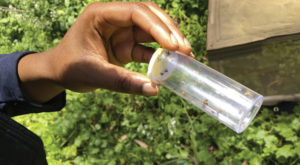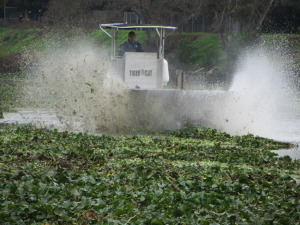When yellow star thistle hitched a ride to California on alfalfa seed in the mid-1800s, it found fertile soil, a temperate climate, and no natural enemies. In its native Mediterranean home, yellow star thistle is kept in check by a small army of biological rivals, but here the plant has become California’s most invasive weed. Growing in dense clusters, yellow star thistle chokes out native plants, scratches hikers with needle-sharp thorns, and is poisonous to horses.
According to a peer-reviewed study published in April in the journal California Agriculture, the spiny weed has invaded 14.3 million of California’s 101 million acres, with the most severe infestations occurring in Central and Northern California. The hardest-hit counties in our region are Monterey (with 78 percent of land infected), Contra Costa (61 percent), Napa (48 percent), and Alameda (38 percent).
“Since 1960, the rate of spread of yellow star thistle has been steady, almost linear, and there is no indication of it slowing down,” wrote Michael Pitcairn, lead author of the study.
In an effort to stem the exotic plant’s proliferation, the California Department of Food and Agriculture released a host-specific insect, the hairy weevil, in every affected corner of California in 1990. Native to Greece, the quarter-inch-long hairy weevil bores into star thistle buds to lay its eggs. The resulting larvae feed on the seeds of the thistle.
“At the very best, hairy weevils knock out about 75 percent of seed production, but with normally infested areas producing 50 million seeds per acre, that’s not enough,” says Joe DiTomaso, University of California Cooperative Extension Specialist.
Nevertheless, the hairy weevil can be a cost-effective way to keep the weed in check in areas inaccessible to methods like mowing or burning. The Midpeninsula Regional Open Space District has had some success with the diminutive insect since 1994, and this summer it released 6,500 weevils at five of its preserves, including Rancho San Antonio near Cupertino, the district’s most popular and accessible preserve.
For more information, visit the web sites of UC Davis’s Weed Research and Information Center or the California Invasive Plant Council.

.jpg)



